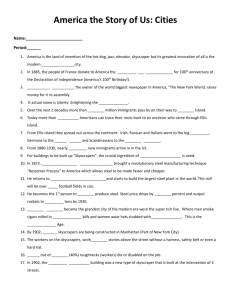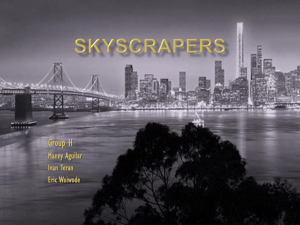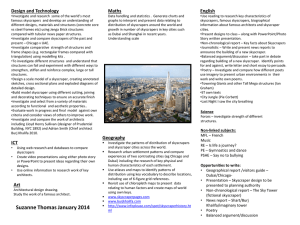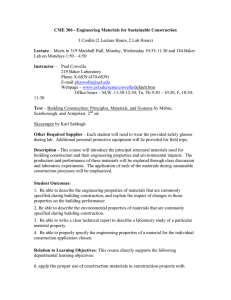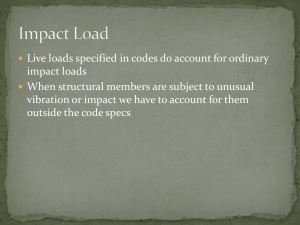Skyscraper Design and Physics Note-form List three defining
advertisement
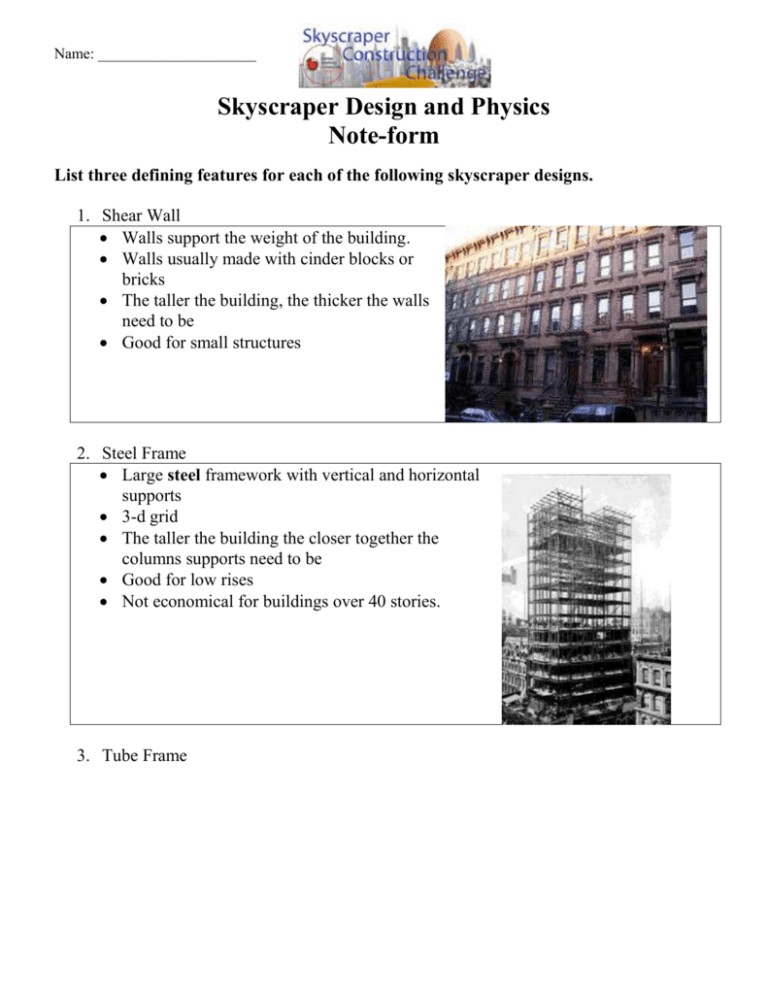
Name: _____________________ Skyscraper Design and Physics Note-form List three defining features for each of the following skyscraper designs. 1. Shear Wall Walls support the weight of the building. Walls usually made with cinder blocks or bricks The taller the building, the thicker the walls need to be Good for small structures 2. Steel Frame Large steel framework with vertical and horizontal supports 3-d grid The taller the building the closer together the columns supports need to be Good for low rises Not economical for buildings over 40 stories. 3. Tube Frame Name: _____________________ Uses “tubular” sections, sometimes several inside one another. These “tubes” can be different shapes, not just rectangular Allows much more floor space or interior room Cuts down costs and allow greater heights. More stable or rigid to resist wind Notice the tight spacing of columns around the entire structure, this forms a “tube” while the inner columns form a second inner “tube”. In your own words, define each of the following terms: Girder: Horizontal steel beam. Column: Vertical steel beam. All the weight gets transferred to these. Superstructure: The whole three dimensional grid of a skyscraper. Dead load: The weight of a skyscraper from all the building material (does not include all the “stuff” and people in the skyscraper, this is live load) Lateral Force: A force that pushes sideways. Wind is the main lateral force that pushes on skyscrapers. Compression: Force that acts to squeeze material together. Tension: Name: _____________________ Force that acts to pull material apart. Answer the following question in complete sentences: 1. What technological advancement allowed skyscrapers to be built starting in the late 1900s? How? The invention of a cheap way to produce steel during the Industrial Revolution allowed steel girders and columns to be used as “building blocks” for skyscrapers. The steel was much stronger and lighter than other building materials and allowed buildings to be built much taller. 2. Beside weight, what is the greatest force placed on skyscrapers? Explain. Wind is the greatest force other than weight. Skyscrapers are like giant sails. The wind at heights can be very strong. When wind pushes on a skyscraper it causes compression on the far side and tension on the near side. Tubular structures are very rigid and can resist this force. But when the wind blows, the columns on the windy side stretch apart, and the columns on the other side squeeze together. 3. What design feature(s) do you intend to use in your spaghetti skyscraper? Why? (give at least two reasons)

